Combining Ecosystem Services with Cost-Benefit Analysis for Selection of Green and Grey Infrastructure for Flood Protection in a Cultural Setting
Abstract
:1. Introduction
- Adopts a holistic vision—one that gives a more profound attention to primary values (i.e., values that concern human well-being, culture, ethics, ecosystems functioning, etc.).
- Undertakes a transdisciplinary way of working to gain an understanding of the coevolving processes between nature, society and technology—one that transcends the boundaries of scientific disciplines by bringing together humanities, science and technology.
- Aims towards selection and design of resilient and adaptive measures and policies—one that is not only directed towards single benefits but also towards multiple benefits to services and functions of urban ecosystems while being flexible in response to actual or changing expectations in climate or other drivers of risk.
- Enables active stakeholder participation—one that brings together individuals and key organisations who share an interest in, and responsibility for, solving problems throughout the entire risk governance process.
2. The Methodological Framework
2.1. The Concept of Ecosystem Services
- Regulating Services—flood disturbance regulation, water regulation,
- Cultural Services—aesthetic, recreation and tourism, scientific and educational, spiritual and religious.
2.2. The Concept of Cost-Benefit Analysis
- denotes losses recorded for base conditions (before mitigation),
- denotes residual losses, recorded with mitigation in place, and
- denotes the sum of all project and maintenance costs, accumulated over the life of project.
- Physical Damages: buildings, contents, infrastructure, site contamination, vehicles, equipment, landscaping;
- Emergency Management: costs for emergency operations centers, evacuations and rescues, security, temporary protective measures, and debris removal and cleanup;
- Loss of Function: functional down time, lost wages, loss of public services, loss of emergency services;
- Casualties: deaths, injuries, and illnesses.
3. The Notion of Multifunctionality
4. Demonstration of the Framework
4.1. Case Study Area
4.2. Application of the Framework
- (1)
- Identification and valuation of ecosystem services pertinent to the project site under various mitigation scenarios, including baseline (pre-mitigation conditions);
- (2)
- Evaluation of the most effective flood mitigation measures through hydrodynamic simulations, and evaluation of economic viability using benefit-cost analysis;
- (3)
- Selection of flood management measures through consideration of ecosystem services, and through solicitation of public and stakeholders input;
- (4)
- Development of the conceptual landscape layout plan.
- (a)
- flood regulation (regulating category);
- (b)
- aesthetic (cultural category);
- (c)
- recreation and tourism (cultural category);
- (d)
- scientific and educational (cultural category);
- (e)
- spiritual and religious (cultural category).
5. Conclusions
Acknowledgments
Author Contributions
Conflicts of Interest
References
- Vojinovic, Z.; van Teeffelen, J. An Integrated Stormwater Management Approach for Small Islands in Tropical Climates. Urban Water J. 2007, 4, 211–231. [Google Scholar] [CrossRef]
- Price, R.K.; Vojinovic, Z. Urban Flood Disaster Management. Urban Water J. 2008, 5, 259–276. [Google Scholar] [CrossRef]
- Mynett, A.; Vojinovic, Z. Hydroinformatics in Multi-Colours—Part Red: Urban Flood and Disaster Management. J. Hydroinform. 2009, 11 (3-4), 166–180. [Google Scholar] [CrossRef]
- Vojinovic, Z. Supporting Flood Disaster Management with Numerical Modelling and Spatial Mapping Tools. Int. J. Geoinform. 2010, 5, 33–40. [Google Scholar]
- Abbott, M.B.; Vojinovic, Z. Realising Social Justice in Water Sector: Part 1. J. Hydroinform. 2010, 12, 110–130. [Google Scholar]
- Abbott, M.B.; Vojinovic, Z. Realising Social Justice in Water Sector: Part 2. J. Hydroinform. 2010, 12, 225–239. [Google Scholar] [CrossRef]
- Abbott, M.B.; Vojinovic, Z. Towards a Hydroinformatics for China. J. Hydroinform. 2012, 15, 1189–1202. [Google Scholar] [CrossRef]
- Abbott, M.B.; Vojinovic, Z. Towards a hydroinformatics praxis in the service of social justice. J. Hydroinform. 2014, 16, 516–530. [Google Scholar] [CrossRef]
- Vojinovic, Z.; Abbott, M.B. Flood Risk and Social Justice: From Quantitative to Qualitative Flood Risk Assessment and Mitigation; IWA Publishing: London, UK, 2012. [Google Scholar]
- Vojinovic, Z.; Solomatine, D.P.; Price, R.K. Dynamic Least-Cost Optimisation of Wastewater System Remedial Works Requirements. Water Sci. Technol. 2006, 54, 467–475. [Google Scholar] [CrossRef] [PubMed]
- Vojinovic, Z.; Sanchez, A.; Barreto, W.J. Optimising sewer system rehabilitation strategies between flooding, overflow emissions and investment costs. In Proceedings of the 11th International Conference on Urban Drainage, Edinburgh, UK, 31 August–5 September 2008.
- Barreto, W.J.; Vojinovic, Z.; Price, R.; Solomatine, D. Approaches to multi-objective multi-tier optimisation in Urban Drainage Planning. In Proceedings of the 7th International Conference on Hydroinformatics, Acropolis, Nice, France, 4–8 September 2006.
- Barreto, W.; Vojinovic, Z.; Price, R.K.; Solomatine, D.P. Multi-objective Evolutionary Approach for Rehabilitation of Urban Drainage Systems. ASCE J. Water Resour. Plan. Manag. 2010, 136, 547–554. [Google Scholar] [CrossRef]
- Alves, A.; Sanchez, A.; Vojinovic, Z.; Seyoum, S.; Babel, M.; Brdjanovic, D. Evolutionary and Holistic Assessment of Green-Grey Infrastructure for CSO Reduction. Water 2016, 8, 402. [Google Scholar] [CrossRef]
- Vojinovic, Z.; Sahlu, S.; Seyoum, S.; Sanchez, A.; Matungulu, H.; Kapelan, Z.; Savic, D. Multi-objective rehabilitation of urban drainage systems under uncertainties. J. Hydroinform. 2014, 16, 1044–1061. [Google Scholar] [CrossRef]
- Vojinovic, Z. Flood Risk: The Holistic Perspective, from Integrated to Interactive Planning for Flood Resilience; IWA Publishing: London, UK, 2015. [Google Scholar]
- Intergovernmental Panel on Climate Change (IPCC). Summary for policymakers. In Managing the Risks of Extreme Events and Disasters to Advance Climate Change Adaptation; Field, C.B., Barros, V., Stocker, T.F., Qin, D., Dokken, D.J., Ebi, K.L., Mastrandrea, M.D., Mach, K.J., Plattner, G.-K., Allen, S.K., et al., Eds.; A Special Report of Working Groups I and II of the Intergovernmental Panel on Climate Change; Cambridge University Press: Cambridge, UK; New York, NY, USA, 2012. [Google Scholar]
- Millennium Ecosystem Assessment. Ecosystems and Human Well-Being: Synthesis; Island Press: Washington, DC, USA, 2005. [Google Scholar]
- Boyd, J.; Banzhaf, S. What are ecosystem services? Ecol. Econ. 2007, 63, 616–626. [Google Scholar] [CrossRef]
- De Groot, R.S.; Alkemade, R.; Braat, L.; Hein, L.; Willemen, L. Challenges in integrating the concept of ecosystem services and values in landscape planning, management and decision making. Ecol. Complex. 2010, 7, 260–272. [Google Scholar] [CrossRef]
- Millennium Ecosystem Assessment. Ecosystems and Human Well-Being: A Framework for Assessment; Island Press: Washington, DC, USA, 2003. [Google Scholar]
- Council of Europe. The European Landscape Convention; Council of Europe: Strasbourg, France, 2000. [Google Scholar]
- European Environment Agency (EEA). Exploring Nature-Based Solutions; EEA Technical Report No 12/2015; EEA: Copenhagen, Denmark, 2015. [Google Scholar]
- Sanchez, A.; Medina, N.; Vojinovic, Z.; Price, R. An integrated cellular automata evolutionary-based approach for evaluating future scenarios and the expansion of urban drainage networks. J. Hydroinform. 2014, 16, 319–340. [Google Scholar] [CrossRef]
- Kumar, D.S.; Arya, D.S.; Vojinovic, Z. Modelling of urban growth dynamics and its impact on surface runoff characteristics, Computers. Environ. Urban Syst. 2013, 41, 124–135. [Google Scholar] [CrossRef]
- Singh, R.; Arya, D.S.; Taxak, A.; Vojinovic, Z. Potential impact of climate change on Rainfall Intensity-Duration-Frequency (IDF) Curves in Roorkee. Water Resour. Manag. 2016, 1–14. [Google Scholar] [CrossRef]
- Lagendijk, A.; Wisserhof, J. Meer ruimte voor kennis. Verkenning van de kennisinfrastructuur voor Meervoudig Ruimtegebruik. In Give Knowledge to Space, Give Space to Knowledge, Part 1: Exploration of Knowledge Infrastructure for Multifunctional Land Use Series; RMNO Report 136; NLRO: Den Haag, The Netherlands, 1999. [Google Scholar]
- Abbott, M.B.; Tumwesigye, B.M.; Vojinovic, Z. The fifth generation of modelling in Hydroinformatics. In Proceedings of the 7th International Conference on Hydroinformatics, Acropolis, Nice, France, 4–8 September 2006.
- Abbott, M.B.; Vojinovic, Z. Applications of Numerical Modelling in Hydroinformatics. J. Hydroinform. 2009, 11, 308–319. [Google Scholar] [CrossRef]
- Abebe, Y.; Seyoum, S.; Vojinovic, Z.; Price, R. Effects of reducing convective acceleration terms in modelling supercritical and transcritical flow conditions. Water 2016, 8, 562. [Google Scholar]
- Vojinovic, Z.; Kecman, V.; Babovic, V. A Hybrid Approach for Modelling Wet Weather Response in Wastewater Systems. ASCE J. Water Resour. Plan. Manag. 2003, 129, 511–521. [Google Scholar] [CrossRef]
- Vojinovic, Z.; Bonillo, B.; Chitranjan, K.; Price, R. Modelling flow transitions at street junctions with 1D and 2D models. In Proceedings of the 7th International Conference on Hydroinformatics, Acropolis, Nice, France, 4–8 September 2006.
- Vojinovic, Z. A Complementary Modelling Approach to Manage Uncertainty of Computationally Expensive Models. Water Sci. Technol. 2007, 56, 1–9. [Google Scholar] [CrossRef] [PubMed]
- Vojinovic, Z.; Tutulic, D. On the use of 1D and coupled 1D-2D approaches for assessment of flood damages in urban areas. Urban Water J. 2009, 6, 183–199. [Google Scholar] [CrossRef]
- Vojinovic, Z.; Seyoum, S.D.; Mwalwaka, J.M.; Price, R.K. Effects of Model Schematization, Geometry and Parameter Values on Urban Flood Modelling. Water Sci. Technol. 2011, 63, 462–467. [Google Scholar] [CrossRef] [PubMed]
- Abdullah, A.; Rahman, A.; Vojinovic, Z. LiDAR filtering algorithms for urban flood application: Review on current algorithms and filters test. Laserscanning 2009, 38, 30–36. [Google Scholar]
- Abdullah, A.F.; Vojinovic, Z.; Price, R.K. A Methodology for Processing Raw LIDAR Data to Support 1D/2D Urban Flood Modelling Framework. J. Hydroinform. 2011. [Google Scholar] [CrossRef]
- Abdullah, A.F.; Vojinovic, Z.; Price, R.K. Improved Methodology for Processing Raw LIDAR Data to Support Urban Flood Modelling—Accounting for Elevated Roads and Bridges. J. Hydroinform. 2011. [Google Scholar] [CrossRef]
- Vojinovic, Z.; Seyoum, S.; Salum, M.H.; Price, R.K.; Fikri, A.F.; Abebe, Y. Modelling floods in urban areas and representation of buildings with a method based on adjusted conveyance and storage characteristics. J. Hydroinform. 2012, 15, 1150–1168. [Google Scholar] [CrossRef]
- Seyoum, S.D.; Vojinovic, Z.; Price, R.K.; Weesakul, S. Coupled 1d and non-inertia 2D flood inundation model for simulation of urban pluvial flooding. ASCE J. Hydraul. Eng. 2012, 138, 23–34. [Google Scholar] [CrossRef]
- Meesuk, V.; Vojinovic, Z.; Mynett, A.; Abdullah, A.F. Urban flood modelling combining top-view LiDAR data with ground-view SfM observations. Adv. Water Resour. 2015, 75, 105–117. [Google Scholar] [CrossRef]
- Doong, D.; Lo, W.; Vojinovic, Z.; Lee, W.; Lee, S. Development of a New Generation of Flood Inundation Maps—A Case Study of the Coastal City of Tainan, Taiwan. Water 2016, 8, 521. [Google Scholar] [CrossRef]
- Haines-Young, R.H.; Potschin, M.P. The links between biodiversity, ecosystem services and human well-being. In Ecosystem Ecology: A New Synthesis; Raffaelli, D., Frid, C., Eds.; BES Ecological Reviews Series; Cambridge University Press (CUP): Cambridge, UK, 2010; p. 172. [Google Scholar]
- Park, D.; Jang, S.; Roesner, L.A. Evaluation of Multi-Use Stormwater Detention Basins for Improved Urban Watershed Management. 2012. Available online: https://www.academia.edu/2335122/Evaluation_of_multi_use_stormwater_detention_basins_for_improved_urban_watershed_management (accessed on 18 April 2014).
- SPAN Co., Ltd.; VEGA Engineering Consultants Co., Ltd. The Study and Detailed Design of Flood Protection System of Phra Nakorn Si Ayutthaya Urbanized Area; Public Works Department, Ministry of Interior: Buenos Aires, Argentina, 1997; Volume 1–2. [Google Scholar]
- UNESCO World Heritage Centre. Historic City of Ayutthaya. Available online: http://whc.unesco.org/en/list/576 (accessed on 1 December 2016).
- Keerakamolchai, W. Towards a Framework for Multifunctional Flood Detention Facilities Design in a Mixed Land Use Area: The Case of Ayutthaya World Heritage Site, Thailand; AIT, Pathumthani and UNESCO-IHE: Delft, The Netherlands, 2014. [Google Scholar]
- Vojinovic, Z.; Hammond, M.; Golub, D.; Hirunsalee, S.; Weesakul, S.; Meesuk, V.; Medina, N.P.; Abbott, M.; Sanchez, A.; Kumara, S. Holistic approach to flood risk assessment in urban areas with cultural heritage: A practical application in Ayutthaya, Thailand. Nat. Hazards 2016, 81, 589–616. [Google Scholar] [CrossRef]

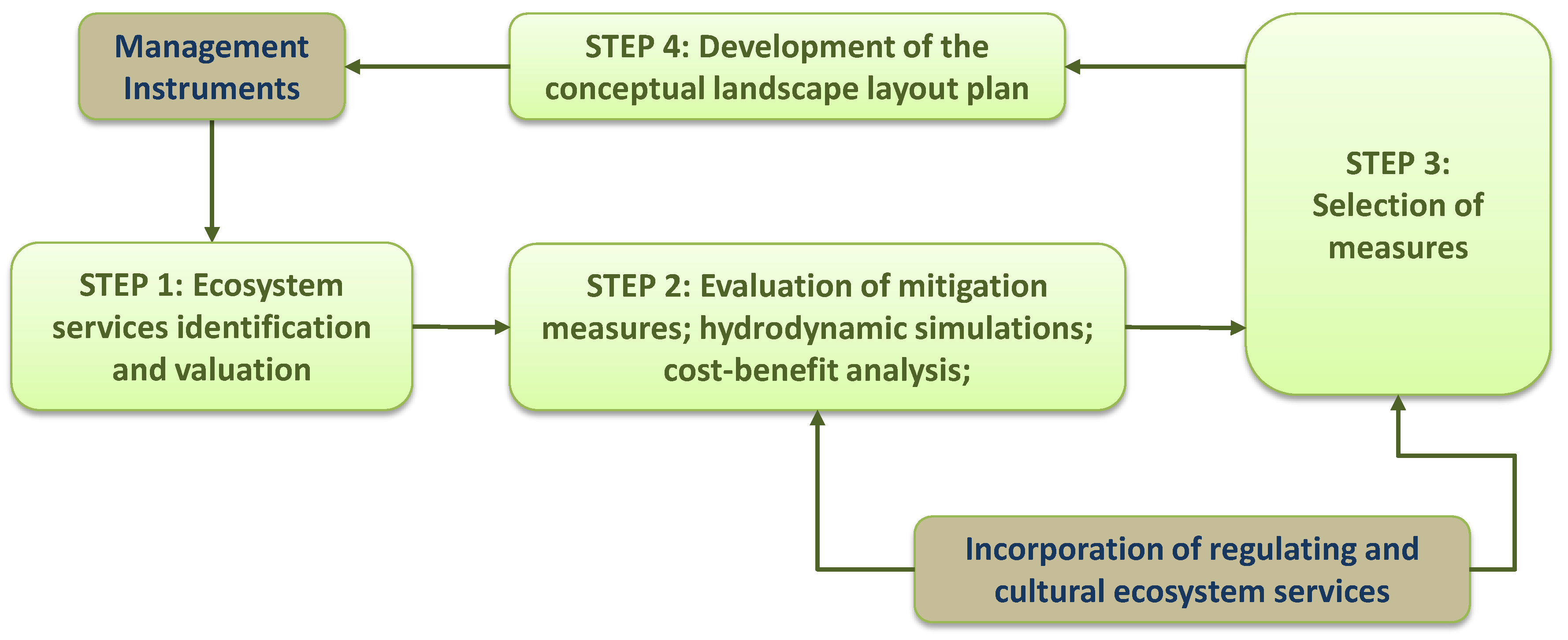
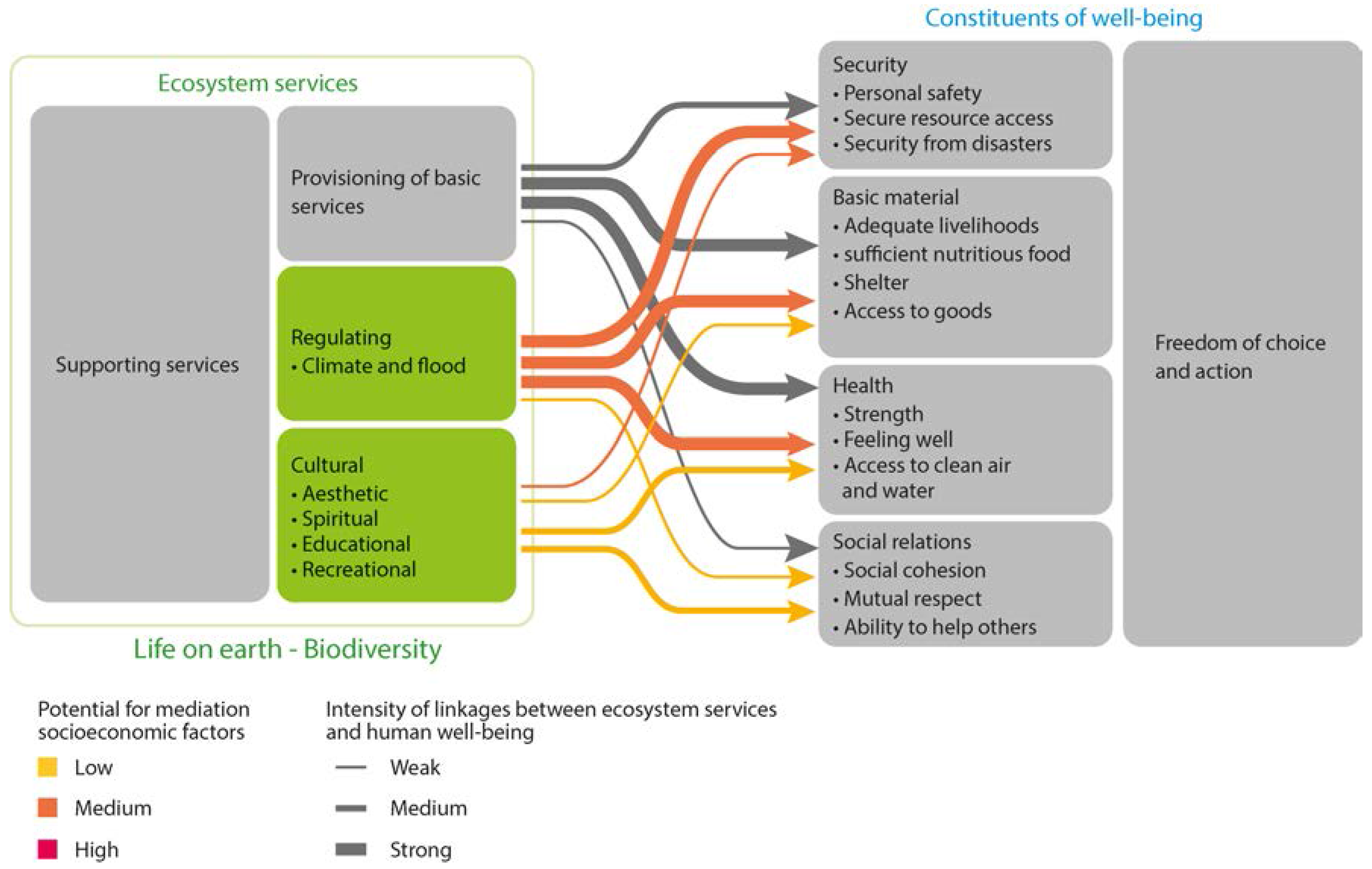


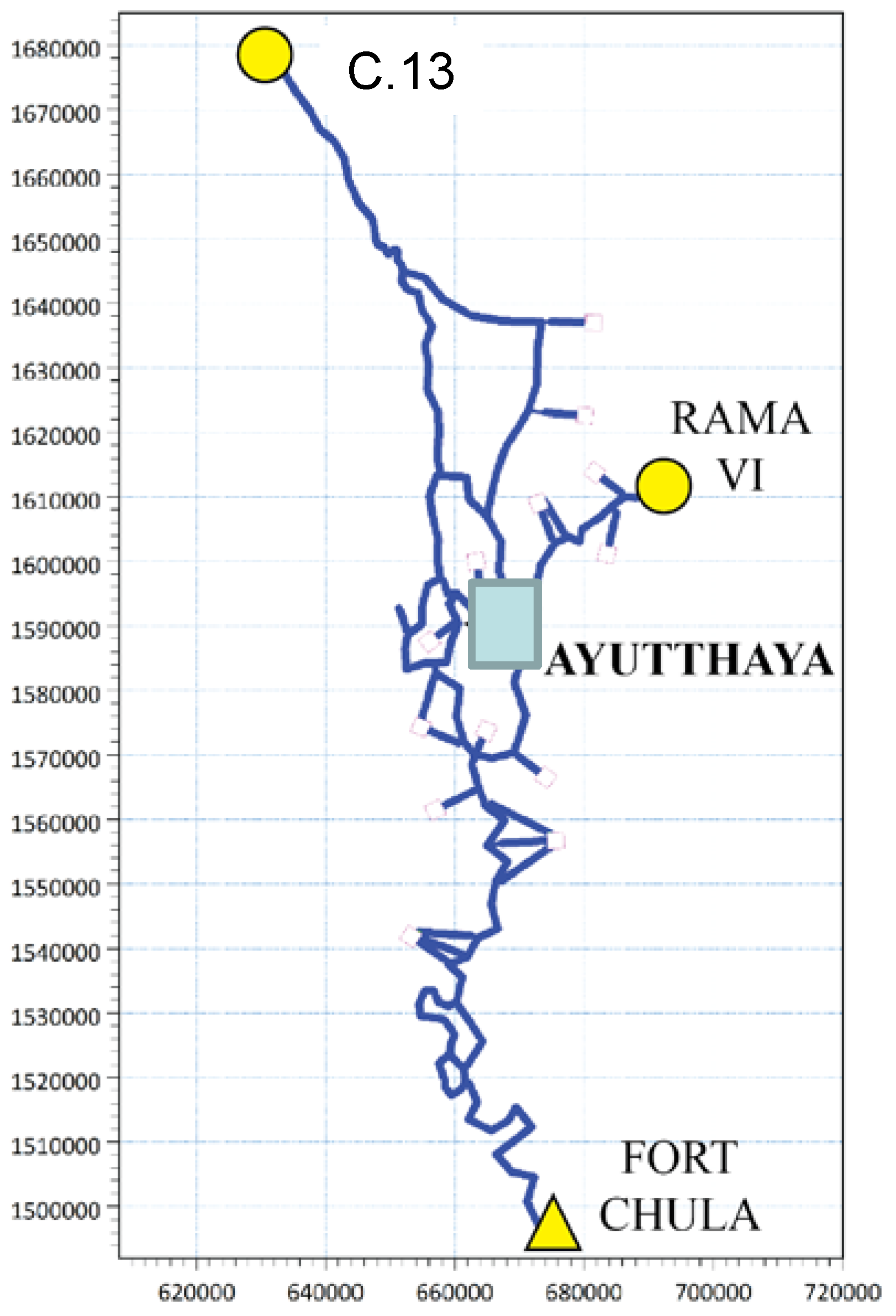
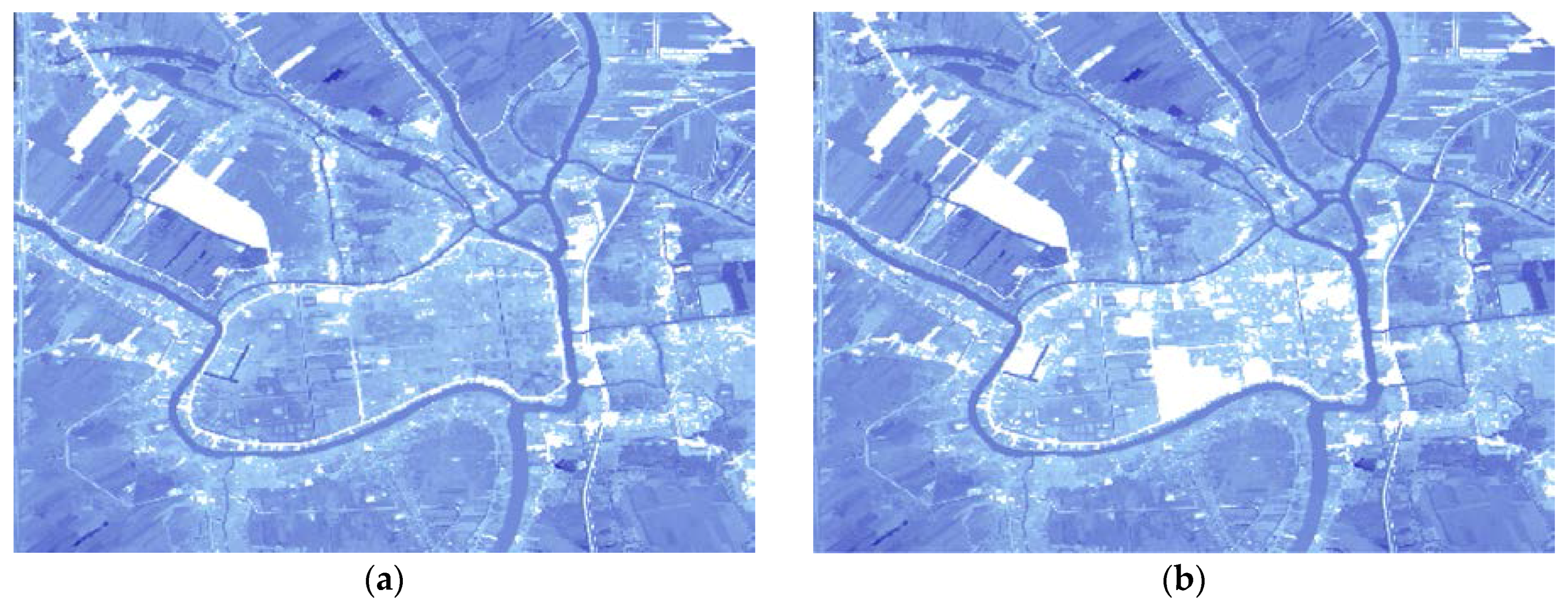
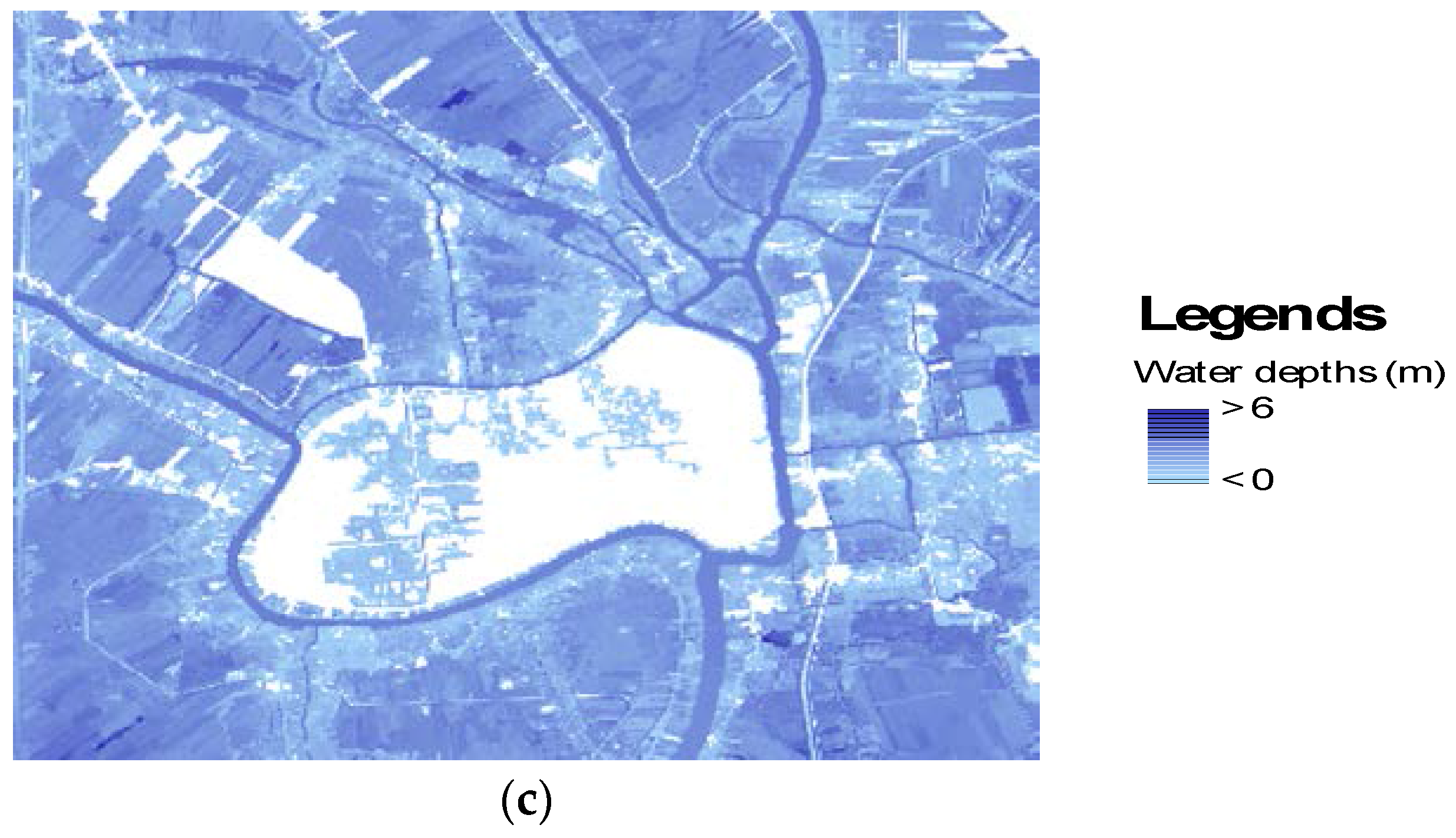
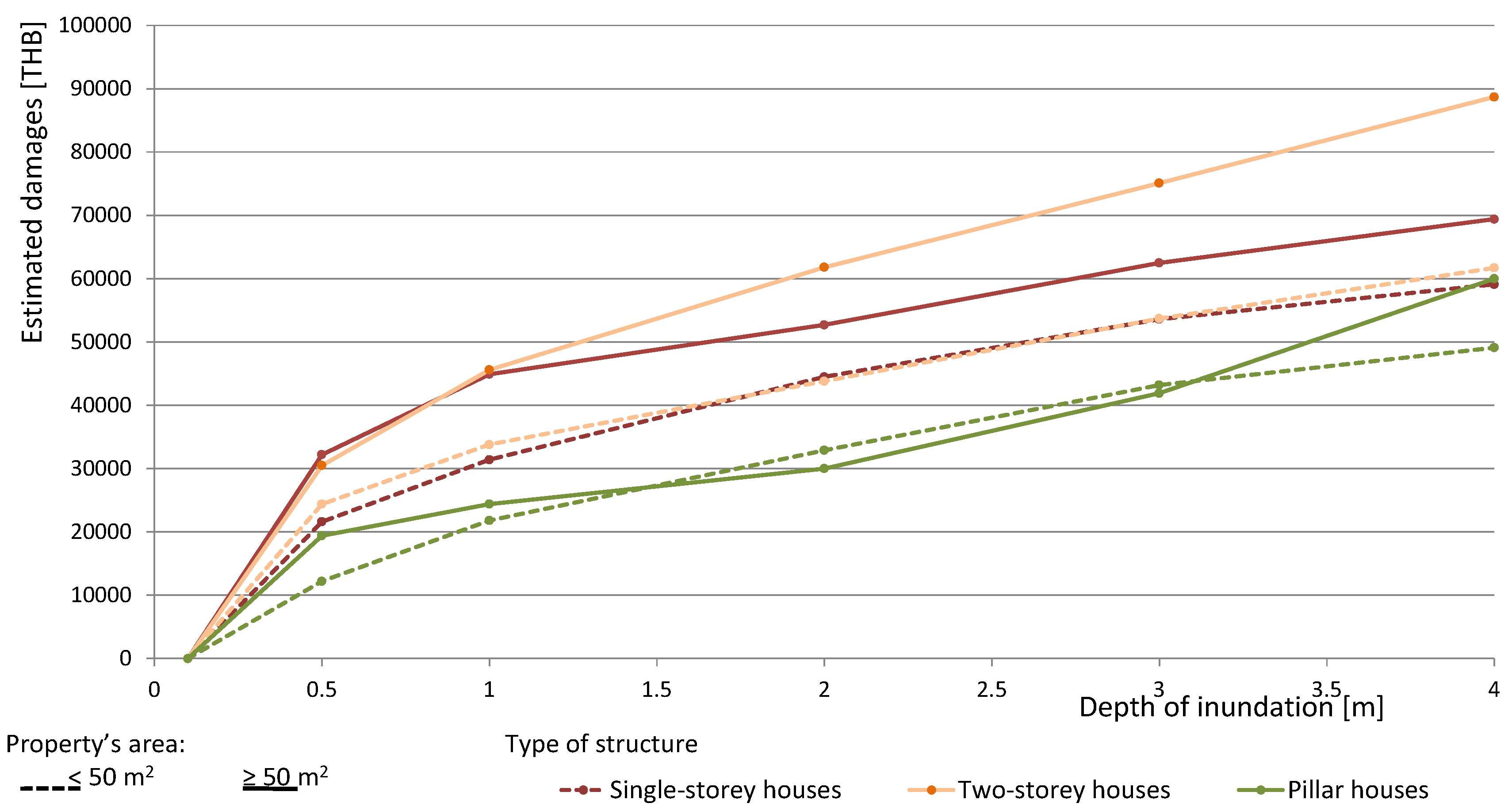

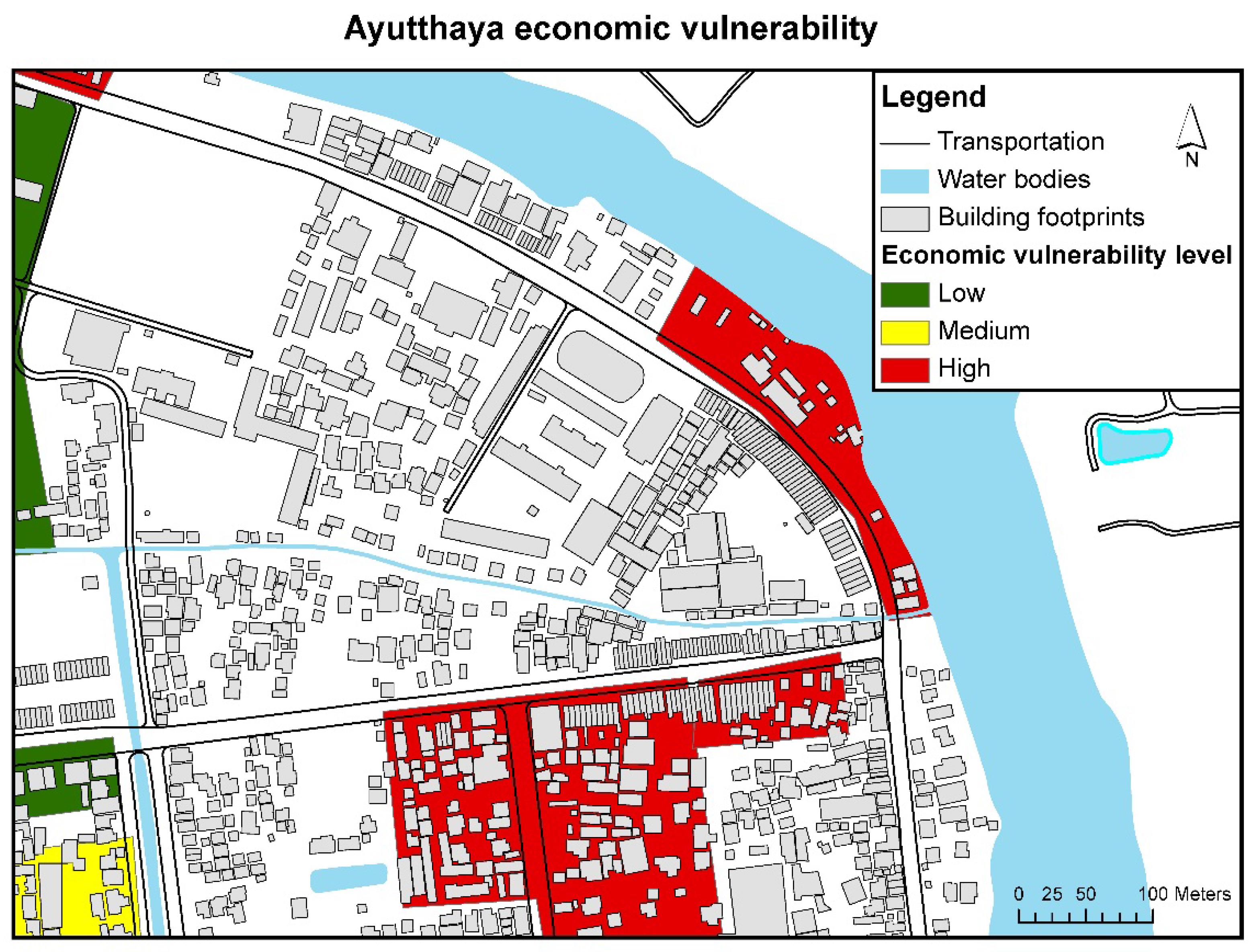
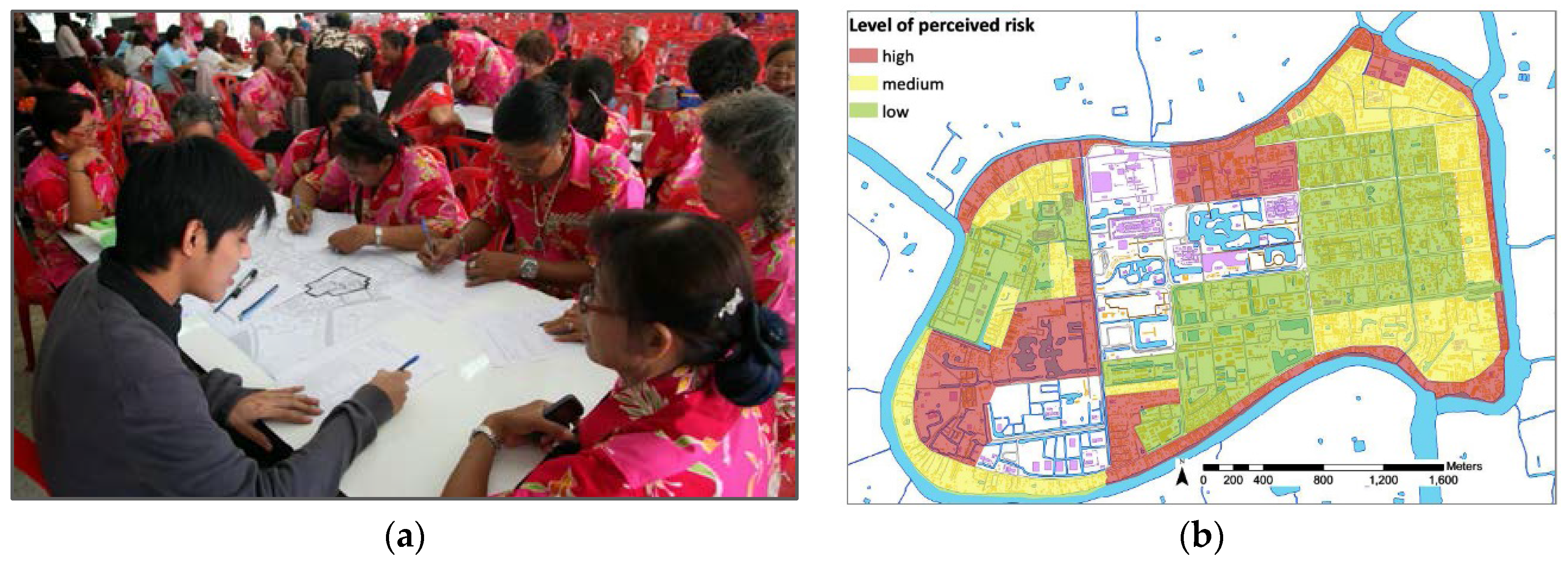
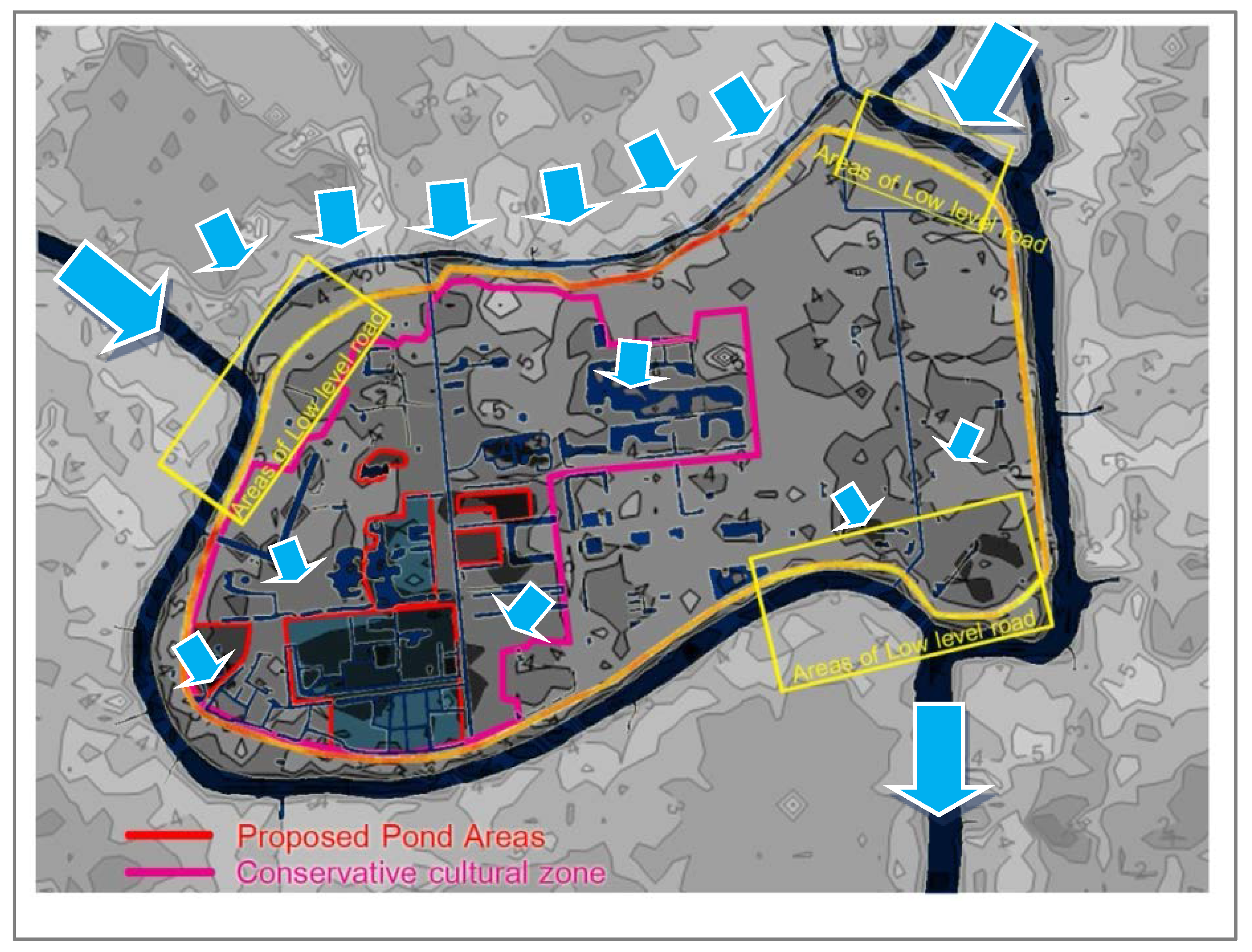
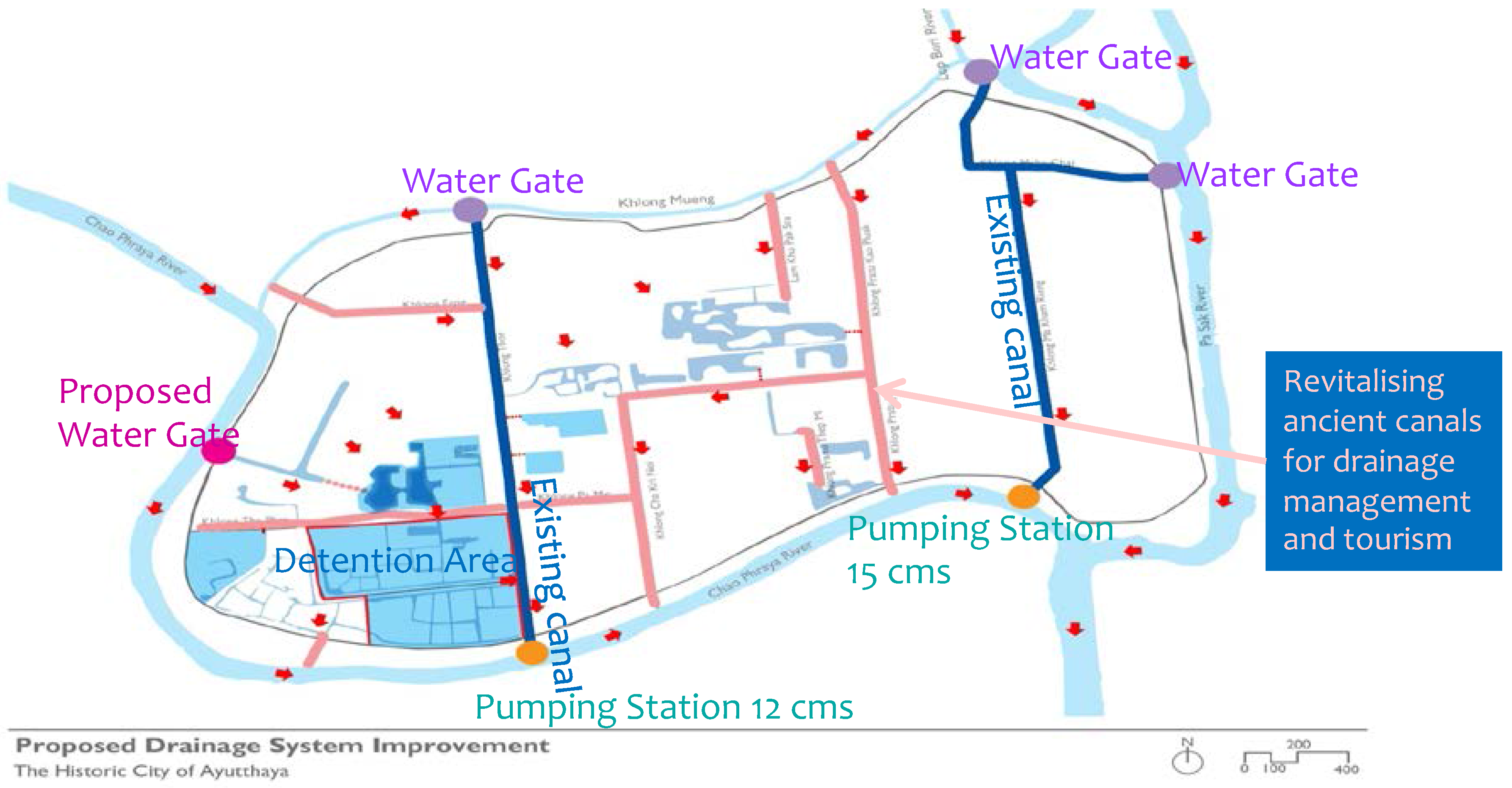
| Scenarios | Mitigation Measures |
|---|---|
| 1 | Existing drainage management and flood protection (existing scenario) |
| 2 | Construction of Ayutthaya bypass channel (regional measure) |
| 3 | Construction of Ayutthaya bypass channel and Chainat-Pasak canal (regional measures) |
| 4 | Increase of the U-Thong Road dike height and reinstatement of Ancient canals (local measures) |
| 5 | Ayutthaya Bypass Channel + Increasing Dike Height (combination of regional and local measures) |
| 6 | Ayutthaya Bypass Channel + Ponds + Ancient Canals (combination of regional and local measures) |
| 7 | Ayutthaya Bypass Channel + Increasing Dike Height + Ponds + Ancient Canals (combination of regional and local measures) |
© 2016 by the authors. Licensee MDPI, Basel, Switzerland. This article is an open access article distributed under the terms and conditions of the Creative Commons Attribution (CC BY) license ( http://creativecommons.org/licenses/by/4.0/).
Share and Cite
Vojinovic, Z.; Keerakamolchai, W.; Weesakul, S.; Pudar, R.S.; Medina, N.; Alves, A. Combining Ecosystem Services with Cost-Benefit Analysis for Selection of Green and Grey Infrastructure for Flood Protection in a Cultural Setting. Environments 2017, 4, 3. https://doi.org/10.3390/environments4010003
Vojinovic Z, Keerakamolchai W, Weesakul S, Pudar RS, Medina N, Alves A. Combining Ecosystem Services with Cost-Benefit Analysis for Selection of Green and Grey Infrastructure for Flood Protection in a Cultural Setting. Environments. 2017; 4(1):3. https://doi.org/10.3390/environments4010003
Chicago/Turabian StyleVojinovic, Zoran, Weeraya Keerakamolchai, Sutat Weesakul, Ranko S. Pudar, Neiler Medina, and Alida Alves. 2017. "Combining Ecosystem Services with Cost-Benefit Analysis for Selection of Green and Grey Infrastructure for Flood Protection in a Cultural Setting" Environments 4, no. 1: 3. https://doi.org/10.3390/environments4010003






